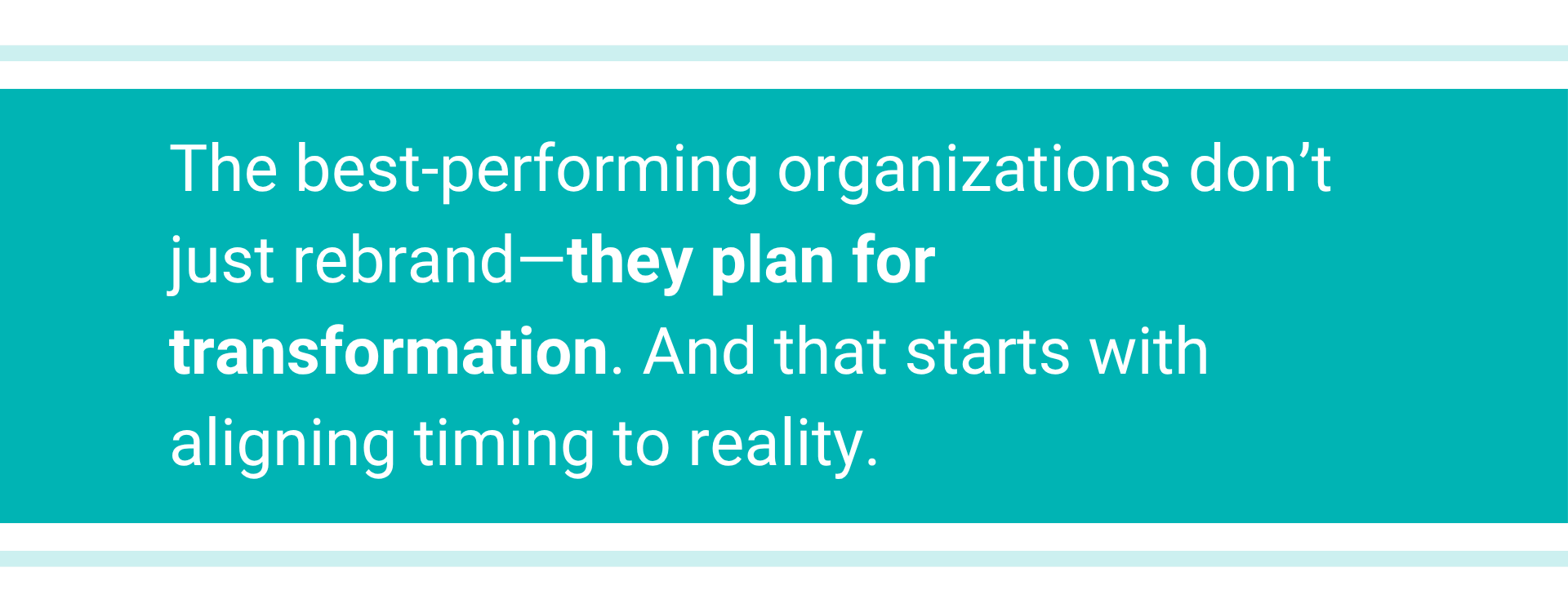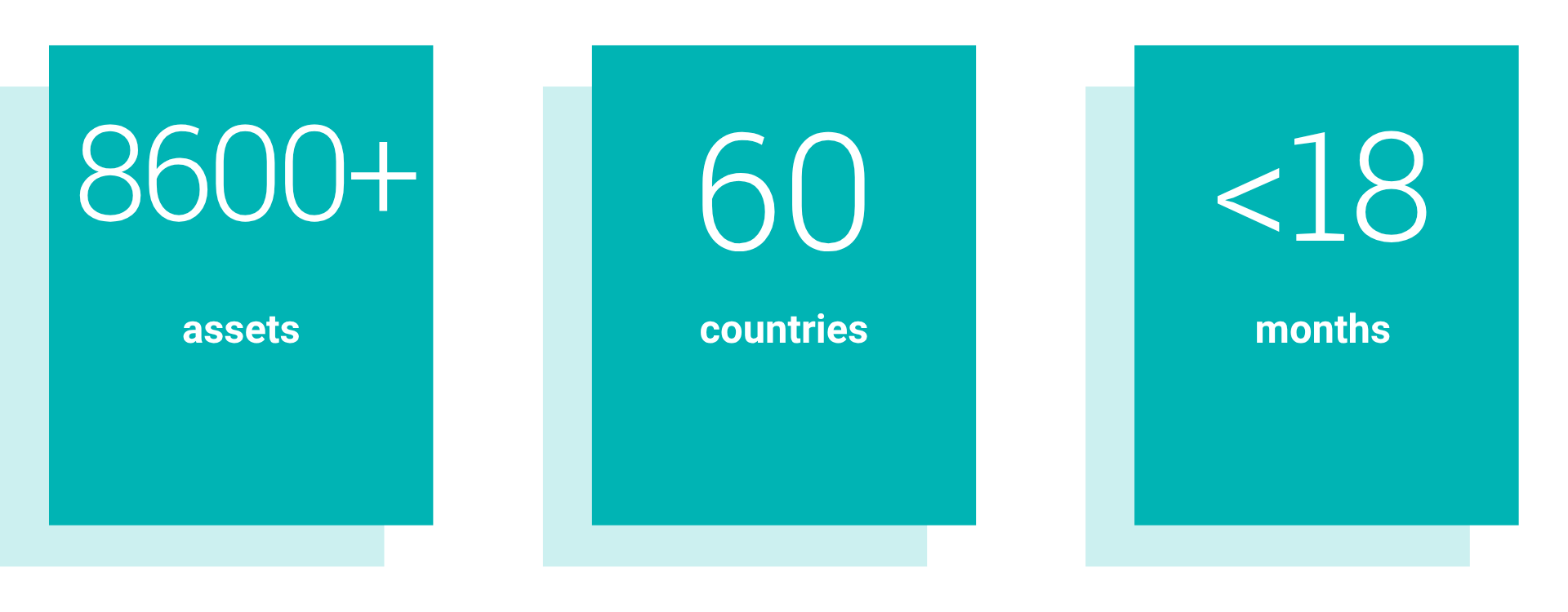M&A activity is rising in the manufacturing sector. For brand and finance leaders, that means a common question is back on the table: how do we rebrand without wasting time, money, or credibility? The answer starts with timing.
The Instinct to Move Fast
When a merger or acquisition closes, the impulse is clear: update the brand, signal the change, and move forward.
But what seems like a smart move at the top can create significant downstream issues. Especially in manufacturing, where brand isn’t confined to websites or slide decks – it’s embedded in molds, inventory, packaging, signage, and regulatory documentation.
One global manufacturer told us: “Leadership wanted the new name on everything within three months. The result? We had to scrap $750K of packaging already in the pipeline.”
These moments become cautionary tales. And they don’t have to be.
The Real Cost of Misaligned Rebrands
Manufacturing rebrands are complex for good reason:
- Inventory lives long – updating too soon leads to waste
- Operational cycles don’t flex easily – production molds, tooling, and supplier lead times are fixed
- Regulatory updates matter – from export filings to safety markings, non-compliance creates risk
- Sales and distribution rely on consistency – cross-branded products create confusion and hurt trust
And yet, when the brand transition plan is built in isolation, without input from operations, supply chain, or finance, costs escalate, timelines slip, and internal confidence erodes.
What Smart Leaders Do Differently
The best-performing organizations don’t just rebrand—they plan for transformation. And that starts with aligning timing to reality.
Take Trane Technologies. When the company spun out from Ingersoll Rand, it faced an enormous mandate: rebrand 8,600+ assets across 60 countries, in less than 18 months.

Instead of treating everything as urgent, Trane Technologies made timing a strategic advantage. We worked with their team to model two scenarios: a compressed rollout and a phased one. Trane Technologies chose a hybrid model, prioritizing assets with legal risk and customer visibility, while sequencing everything else over time.
That decision allowed them to:
- Hit legal deadlines without chaos
- Avoid unnecessary rework
- Reduce cost by focusing on high-impact conversions first
And most importantly, they gave every region, every team, and every partner the clarity they needed to execute confidently.

What That Looks Like in Practice
In our work with manufacturing clients, we consistently see five practices that lead to efficient, high-impact rebrands:
- Start with sequencing, not speed
You don’t need to rebrand everything at once. Instead, prioritize what matters most, flagship products, high-traffic touchpoints, and anything tied to legal or compliance risk.
- Centralize the budget
When rebrand funding is spread across business units, you lose efficiency and governance. A centralized budget helps control costs and creates space for smart decisions.
- Phase investment to match operations
Align rollout plans with production and inventory cycles. Updating packaging during a natural reprint cycle, for example, avoids waste and saves money.
- Use rebranding to rationalize assets
A brand transition is the perfect moment to ask: do we need all of these branded items? Often, the answer is no and rationalizing can offset rebrand costs meaningfully.
- Build brand governance early
Without clear guidelines and centralized oversight, teams will improvise. That leads to inconsistent execution and rework. Governance upfront prevents confusion down the line.
The Opportunity (and the Risk)
A manufacturing rebrand is one of the few moments where brand, operations, and finance must work as one. When they do, the results go far beyond aesthetics:
- Redundant spend gets eliminated
- Brand perception improves
- Employees rally around a shared identity
- Operational efficiency increases
When they don’t, the brand suffers and so does the balance sheet.
Final Thought
A rushed rebrand might feel like progress, but it often leads to retraced steps and lost value. Slowing down, just enough to align strategy, operations, and execution, can accelerate impact where it matters most.
That’s not hesitation. That’s leadership.
Planning a brand transition?
We help manufacturing organizations design and execute rebrands that work across every touchpoint, from fleet to packaging to regulatory compliance. Let’s talk about how to make timing your advantage. Contact Jennifer Farrelly (j.farrelly@brandactive.com) to start planning your rebrand.



